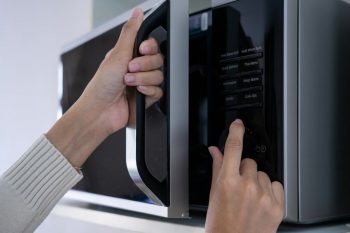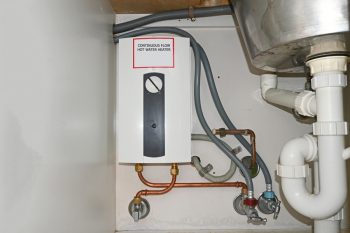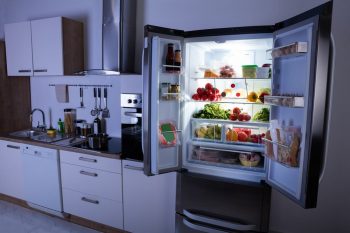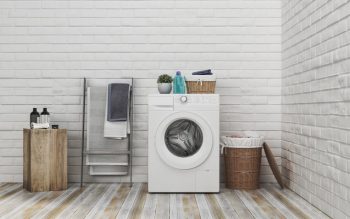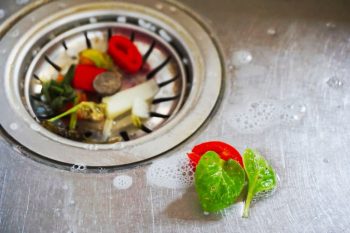
Air conditioning systems, commonly known as ACs, are a staple in most homes and offices, especially in hotter climates. They are our best defense against sweltering summer heat, providing a cool and comfortable environment. But have you ever stopped to wonder what makes an AC cold? How does this essential machine work to lower the temperature in your space? In this comprehensive guide, we’ll delve into the mechanics of an AC system and explain how it cools your air.
An air conditioner, or AC, doesn’t actually create cold air. Instead, it works by removing heat and humidity from the indoor air, making it feel cooler. This process is based on the refrigeration cycle, which involves the continuous circulation and phase changes of a refrigerant between its gas and liquid states. The key components of an AC system involved in this process are the evaporator, compressor, condenser, and expansion valve.
The Basics of Air Conditioning
Before we dive into the nuts and bolts of an air conditioning system, it’s essential to understand one fundamental principle: an air conditioner does not create cold air. Instead, it works by removing heat and humidity from the indoor air, making it feel cooler. This process is based on the refrigeration cycle, a continuous circulation and phase changes of a refrigerant between its gas and liquid states.
Key Components of an AC System
An AC system consists of four main components: the evaporator, the compressor, the condenser, and the expansion valve. Each of these parts plays a crucial role in the cooling process.
- Evaporator Coil: The evaporator coil is the component responsible for cooling the refrigerant, which absorbs the heat and humidity from the indoor air. As the warm indoor air passes over the cold coils, the temperature drops, and the cooled air is circulated back into the room.
- Compressor: Often referred to as the heart of the AC system, the compressor’s role is to compress the refrigerant gas, increasing its temperature and pressure. This high-pressure gas then moves to the condenser coil.
- Condenser Coil: The condenser coil is where the refrigerant releases heat outside the home. The high-pressure gas from the compressor is cooled down by the outdoor air blown over the coils, turning the refrigerant back into a liquid state, ready for the evaporator.
- Expansion Valve: The expansion valve regulates the amount of compressed liquid refrigerant moving into the evaporator. Once in the evaporator, the refrigerant experiences a pressure drop, expands, and changes back into a gas.
Understanding the Refrigeration Cycle
The refrigeration cycle is central to understanding how an AC works. In simple terms, the cycle involves four steps:
- Compression: The refrigerant enters the compressor as a low-pressure gas. The compressor pressurizes the gas, raising its temperature.
- Condensation: The high-pressure, high-temperature gas then flows through the condenser coil, where it releases heat to the outdoor air and condenses into a liquid.
- Expansion: The high-pressure liquid refrigerant passes through the expansion valve, which reduces its pressure, causing it to cool rapidly.
- Evaporation: The cold liquid refrigerant enters the evaporator coil. As the indoor air is blown over the coil, the refrigerant absorbs heat from the air and evaporates into a gas. This process cools the air, which is then circulated back into the room.
Common Issues with AC Systems
Sometimes, an AC may not cool a room effectively. This could be due to several reasons, such as dirty cooling coils, refrigerant leaks, blocked condenser units, dirty air filters, compressor problems, outdated systems, improper thermostat settings, or poor airflow. Regular maintenance, including cleaning or replacing air filters, checking for refrigerant leaks, and ensuring proper airflow around the condenser unit, can help address these issues.
The Impact of Thermostat Settings
Thermostat settings play a crucial role in the cooling efficiency of an AC. Extreme settings can increase the load on the system and reduce overall efficiency. The U.S. Department of Energy recommends setting your thermostat to 78°F (26°C) when you’re home during the summer to stay comfortable and save money.
In conclusion, an air conditioner cools the indoor air by removing heat and humidity through the refrigeration cycle. Understanding how this process works can help you optimize your AC’s performance and maintain a comfortable temperature in your home or office.
Frequently Asked Questions
How often should I replace or clean my AC’s air filter?
Most experts recommend that you should replace or clean your AC’s air filter every 30 to 90 days. However, if you have pets, or if the AC is in constant use or located in a dusty environment, you may need to do it more often.
What happens if my AC has a refrigerant leak?
If your AC has a refrigerant leak, it can cause a variety of issues. Not only will your system be less efficient, but it can also result in higher energy bills, decreased cooling capacity, damage to the compressor, and even pose health risks. If you suspect a refrigerant leak, it’s best to call a professional to fix it.
Why is it recommended to set the thermostat to 78°F (26°C) during the summer?
The U.S. Department of Energy recommends setting your thermostat to 78°F (26°C) when you’re home during the summer because this temperature is generally comfortable for most people and it also helps save energy. If you set your thermostat too low, your AC will have to work harder to cool the air, resulting in higher energy consumption and costs.
How can I reduce the load on my AC system?
There are several ways to reduce the load on your AC system. These include setting your thermostat to a higher temperature, using ceiling fans to circulate the cool air, closing curtains or blinds to block out the sun, sealing doors and windows to prevent hot air from entering, and ensuring your AC system is well-maintained and free from issues like refrigerant leaks or dirty air filters.
Can I fix common issues with my AC system myself?
While some issues, such as replacing air filters or cleaning the outdoor unit, can be done yourself, others may require professional help. For example, if you have a refrigerant leak or compressor problem, it’s best to call a professional. Always remember to turn off the power to your AC before attempting any maintenance or repairs.




